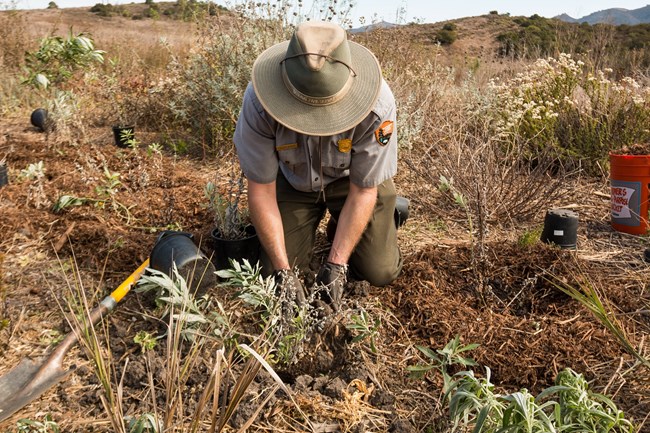
NPS / Connar L'Ecuyer
The Bipartisan Infrastructure Law was signed on November 15, 2021. It is a historic investment in the restoration and protection of the environment.
The law includes funding for ecosystem restoration, fire mitigation and prevention, and transportation projects that benefit the communities and areas served by the Department of the Interior and the National Park Service.
Ecosystem Restoration Investments under the Bipartisan Infrastructure Law
In Fiscal Year 2022, the Bipartisan Infrastructure Law provided $15 million for ecosystem restoration projects in national parks. Projects fall into the below topic areas and compliment key Department of the Interior initiatives. See the list of projects through Fiscal Year 2026 below.
Conserve and restore unique biocultural island resources and increase biodiversity with a focus on Pacific Islands and U.S. Territories. Restore function and integrity of near-shore (coral and oyster reefs, sea grass) and coastal communities (salt marsh, sand dunes, bluffs, mangrove, maritime forest) to protect park natural and cultural resources, support local communities, and promote visitor enjoyment.
DOI Keystone Initiatives: Foster native biodiversity in island systems AND rehabilitate and realign coastal salt marsh
Build climate resilience and increase biodiversity in high-priority sagebrush and forest systems with a focus on core areas, connectivity, and the use of science-driven decision making. Leverage BIL Fire and other fund sources for restoration of priority systems, including reduction of woody fuels, treatment of invasive species, and reestablishment and expansion of native species.
DOI Keystone Initiatives: Defend and grow the core in sagebrush systems AND build and expand drought resilience in the Klamath Basin
Restore grasslands and prairies, including development of native seed/plant capacity for revegetation of cultural landscapes and priority ecosystems, improvement of soil health, treatment of invasive species, and restoration of hydrologic function. Support resilient multi-species conservation, wild and healthy bison herds, layover and core habitat for birds and pollinators, and natural and human communities.
DOI Keystone Initiatives: Bison, birds, and bees: restore and protect grasslands for co-stewarded, healthy, wild bison herds, migratory bird populations, and critical pollinators
Promote resilient ecosystems by managing deer, invasive plants, exotic pests and pathogens, restoring degraded forest stands and wetland systems, and restoring native vegetation and mitigating environmental hazards on mined lands in Appalachia. Support healthy forests, wetlands, and other systems that are resilient to climate change and other stressors, protect cultural landscape integrity, enhance visitor experience, and promote local community health.
DOI Keystone Initiatives: Improve human and environmental health in Appalachia
Restore damaged and degraded freshwater systems (streams, wetlands, riparian areas) to increase biodiversity, improve fish passage, protect tribally important and sacred sites, and contribute to healthy communities in both rural and urban disadvantaged (Justice 40) areas by providing clean water, reducing flooding, and allowing for recreational activities and access.
DOI Keystone Initiatives: Gravel to Gravel: assess and restore salmon in the Arctic-Yukon-Kuskokwim basin
Bipartisan Infrastructure Law Projects
Funding from the Bipartisan Infrastructure Law is supporting projects in national parks across the country. Explore active projects near you below.
| Park | State | PROJECT TITLE | FY22 | FY23 | FY24 | FY25 | FY26 |
|---|
Project Summaries by Topic Area
-
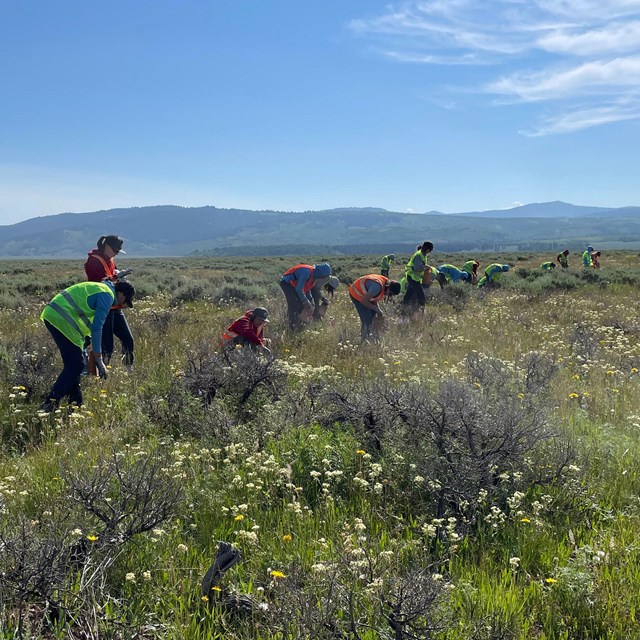 Sagebrush and Forest System
Sagebrush and Forest SystemBuilding Climate Resilience and Increasing Biodiversity in High-Priority Sagebrush and Forest System
-
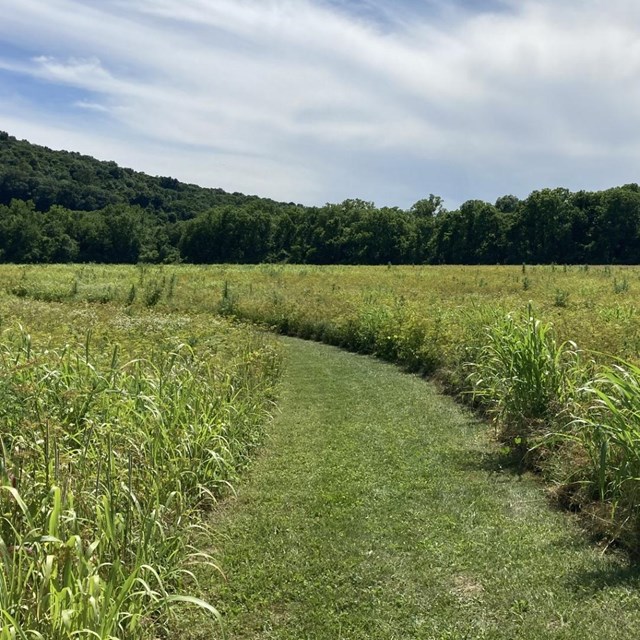 Grasslands
GrasslandsPromoting Landscape Conservation and Improving Habitat Connectivity in Grasslands
-
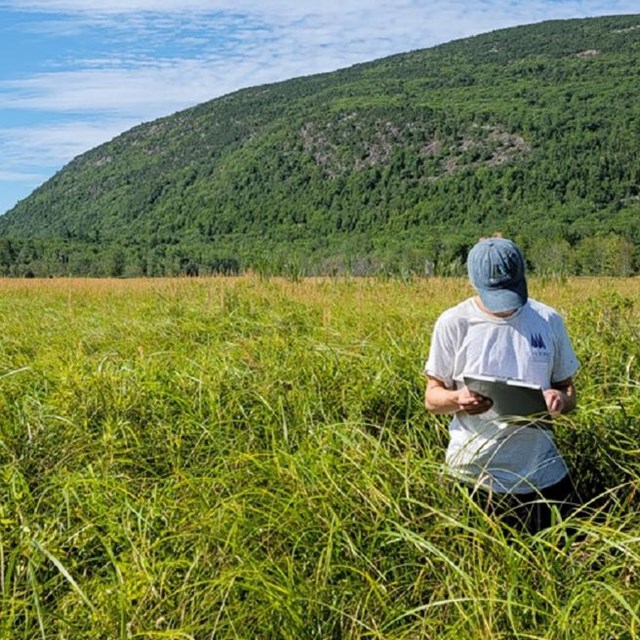 Island and Coastal Ecosystems
Island and Coastal EcosystemsProtecting and Restoring Island & Coastal Ecosystems in the Face of a Changing Climate
-
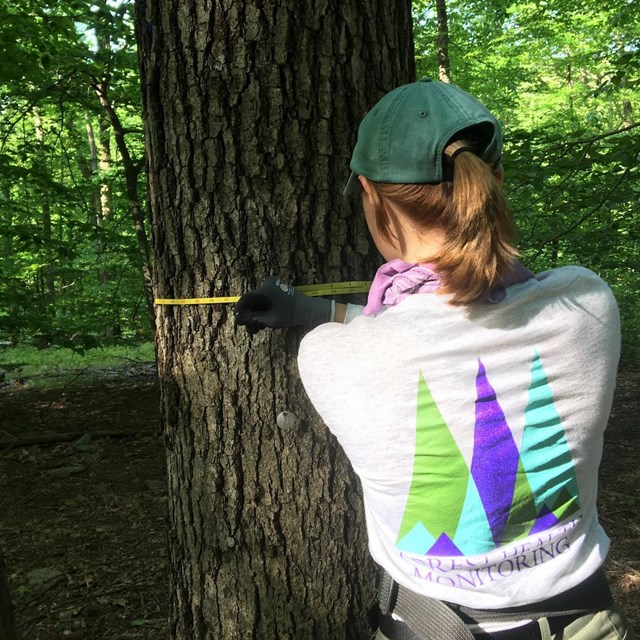 One Health in Appalachia
One Health in AppalachiaEcosystem Resilience in Appalachia Through a One Health Approach
-
 Freshwater Systems
Freshwater SystemsRestoring and Improving Natural Freshwater Systems
-
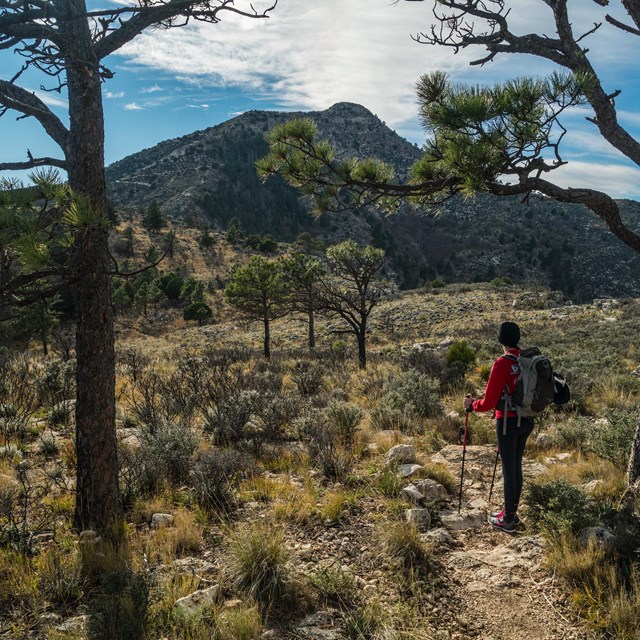 All Project Summaries
All Project SummariesExplore all Bipartisan Infrastructure Law – Ecosystem Restoration project summaries.
Energy Community Revitalization Program
Orphaned Oil and Gas Wells
The National Park Service is plugging, remediating, and reclaiming orphaned oil and gas wells in national parks with funding from the Bipartisian Infrasturcture Law – Energy Community Revitalization Program.
There are approximately 1800 oil and gas wells located in at least 47 parks. An estimated 364 of the wells are actively operating, while the remaining wells are inactive, plugged, abandoned, or orphaned. We are completing projects to remediate sites for the health and safety of national park visitors and their environments.
Orphaned oil and gas wells can:
-
Leak noxious substances such as methane, a potent greenhouse gas, as well as contaminate groundwater and air,
-
Diminish viewsheds and experiences of national park visitors
-
Impact drinking water and air quality of surrounding communities
Beginning in 2022, Bipartisan Infrastructure Law funding bolstered the ability of the NPS to plug and restore wells based on public health and safety, potential environmental harm, and other subsurface impacts or land use priorities.
| PROJECT TITLE | Park | FY22 | FY23 | FY24 | FY25 |
|---|
Energy Community Revitalization
Project SummariesRestoration Success Stories
Last updated: January 16, 2025
